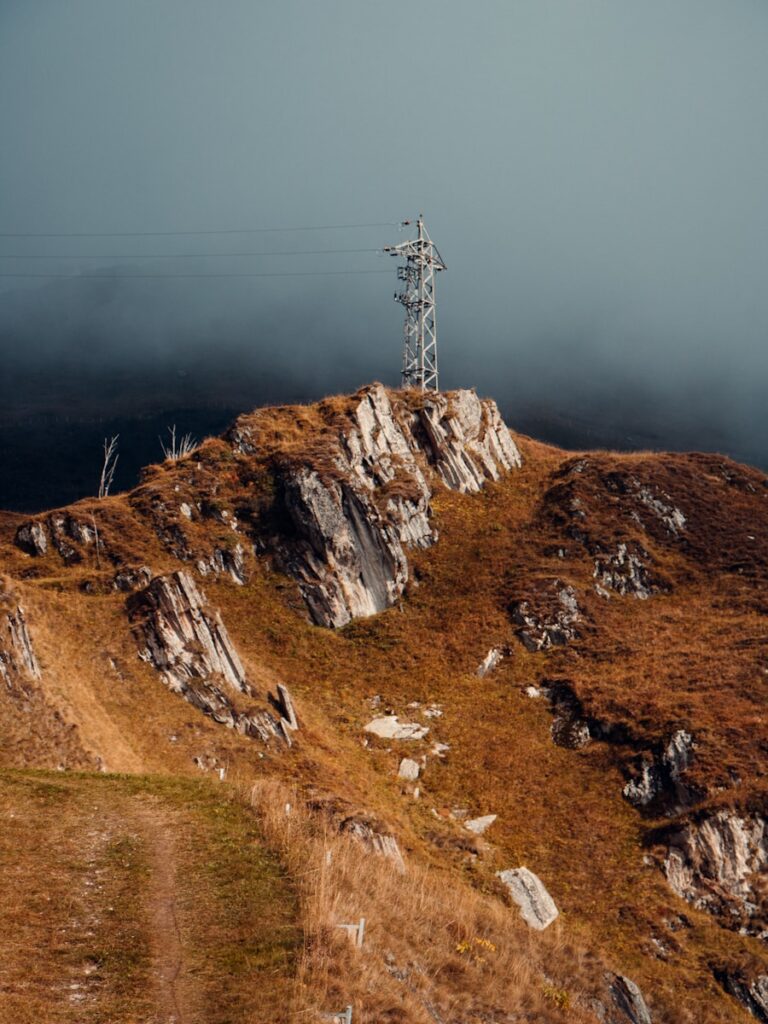Ukraine’s Mineral Wealth: A Game-Changer for EVs, Tech, and Energy
Ukraine’s vast mineral reserves—long overshadowed by geopolitical turmoil—are now emerging as a potential game-changer for the electric vehicle (EV), technology, and renewable energy sectors.
Amid this landscape, U.S. President Donald Trump has rekindled discussions about a strategic deal to secure access to Ukraine’s resources, framing it as a cornerstone of American energy dominance and a counter to China’s global mineral monopoly.
Below, we explore how Trump’s push amplifies the stakes, risks, and opportunities for global industries.
Ukraine’s Mineral Wealth: A Geological Powerhouse
Lithium: The EV Battery Backbone
Ukraine holds approximately 500,000 tonnes of lithium reserves (U.S. Geological Survey, 2023), ranking it among the top 10 global lithium-rich nations. Lithium-ion batteries are pivotal for EVs, storing energy through a chemical reaction between lithium, cobalt, and nickel. While Chile and Australia dominate current production, Ukraine’s untapped deposits could diversify a market where China refines 60% of the world’s lithium. Projects like the Shevchenkivske lithium deposit, developed with European Lithium Ltd., aim to produce 15,000 tonnes of lithium hydroxide annually by 2026—enough for 400,000 EV batteries. However, extraction remains stalled due to Russia’s occupation of key regions like Kherson, where lithium-rich pegmatites are concentrated.
Graphite: The Anode Advantage
Graphite, used in battery anodes, accounts for 20% of global reserves in Ukraine. The Zavalie deposit in central Ukraine, with 10 million tonnes of high-purity graphite, could rival Mozambique’s giant Balama mine. Yet, Ukraine produces less than 1% of global supply, highlighting underinvestment. For context, synthetic graphite (derived from petroleum) dominates the anode market, but natural graphite is cheaper and more sustainable. Ukraine’s reserves could reduce reliance on China, which produces 65% of the world’s natural graphite (Benchmark Mineral Intelligence, 2023).
Rare Earth Elements (REEs): Breaking China’s Monopoly
Ukraine’s underexplored REE deposits—neodymium, yttrium, and dysprosium—are critical for high-tech industries. Neodymium magnets, for example, are essential for EV motors, wind turbines, and consumer electronics. China currently controls 90% of global REE processing, but Ukraine’s reserves in the Azov Sea region and Krivbas Basin could offer alternatives. The catch? Extracting REEs requires complex chemical processes, and Ukraine lacks the infrastructure to refine them domestically.
Titanium and Manganese: Industrial and Green Energy Catalysts
Ukraine’s titanium reserves (Europe’s largest) are vital for aerospace, defense, and hydrogen electrolyzers. Before the war, it supplied 30% of Boeing’s titanium via VSMPO-AVISMA’s operations. Manganese, meanwhile, strengthens steel for wind turbines and enhances lithium-ion battery durability. With the EU needing 18 times more lithium by 2030 (European Battery Alliance), Ukraine’s manganese reserves (6% of global totals) could position it as a key supplier for Europe’s green steel initiatives.
EV Sector: Accelerating the Battery Revolution
Supply Chain Diversification
Europe’s EV industry is racing to secure ethical, localized supply chains. Ukraine’s lithium and graphite could reduce dependence on China, which dominates battery component production. For example, China’s CATL supplies 35% of the world’s EV batteries, but geopolitical tensions and tariffs (e.g., the U.S. Inflation Reduction Act) are pushing automakers like Tesla and Volkswagen to seek alternatives. Ukraine’s proximity to EU markets—sharing borders with Poland, Slovakia, Hungary, and Romania—lowers transportation costs and aligns with the EU’s Carbon Border Adjustment Mechanism, which penalizes imports with high carbon footprints.
Case Study: Tesla’s Ethical Sourcing Push
Tesla’s 2023 Impact Report emphasizes “geographically diverse, ethical mineral sourcing,” a nod to growing consumer and regulatory pressure. Ukraine’s post-war reconstruction could align with this ethos, provided mining projects adopt standards like the Initiative for Responsible Mining Assurance (IRMA). However, rebuilding extraction infrastructure in war-torn regions like Donbas—home to coal and REEs—will require billions in investment and demining efforts.
Tech Sector: Beyond Rare Earths
Titanium’s Role in Semiconductors and Aerospace
Titanium’s resistance to corrosion and high temperatures makes it indispensable for semiconductor manufacturing equipment and jet engines. Ukraine’s ilmenite sands in the Azov Sea region were once a cornerstone of global supply, but Russia’s blockade of Black Sea ports has halted exports. Reviving this sector could help Western tech giants reduce reliance on Russia, which supplies 40% of the U.S.’s titanium sponge (USGS, 2023).
Neodymium Magnets: The Invisible Tech Enabler
From smartphones to MRI machines, neodymium magnets enable miniaturization and efficiency. Apple, for instance, uses them in iPhone vibration motors and MagSafe chargers. Ukraine’s potential to supply these magnets hinges on building refining partnerships with firms like Hitachi Metals or Arnold Magnetic Technologies, which currently depend on Chinese REEs.
Energy Sector: Fueling the Green Transition
Wind Energy: The Manganese Connection
Manganese enhances the durability of wind turbine steel, which must withstand harsh marine environments. The International Energy Agency (IEA) estimates that global wind capacity must triple by 2030 to meet net-zero targets. Ukraine’s manganese could support this surge, but competition is fierce. South Africa, the top producer, faces energy shortages, while Gabon’s recent coup has destabilized supply chains.
Hydrogen Economy: Titanium’ Corrosion Resistance
Green hydrogen, produced via electrolysis, relies on titanium for electrolyzer components. The European Hydrogen Backbone Initiative envisions Ukraine exporting 10 million tonnes of hydrogen annually by 2050, leveraging its gas pipelines and titanium reserves. However, this requires retrofitting Soviet-era infrastructure—a $100 billion challenge, per the World Bank.
Geopolitical Risks: Navigating a Minefield
1. Conflict and Resource Nationalism
The Donbas region, rich in coal and REEs, remains a contested hotspot. A 2023 Chatham House report warns that post-war resource governance will be “as critical as military strategy” to prevent exploitation by oligarchs or foreign actors. For example, Russia’s occupation of Zaporizhzhia threatens access to lithium deposits, while illegal mining in Donbas funds separatist groups.
2. China’s Counterplay
Beijing has expanded its Belt and Road Initiative into Eastern Europe, offering loans for infrastructure in exchange for mineral access. If Ukraine aligns with the West, China could retaliate by flooding markets with cheap REEs or restricting exports—a tactic used during the 2010 Japan rare earth embargo.
3. Sustainable Mining Imperatives
A 2022 World Bank survey found that 70% of Ukrainians prioritize environmental safeguards in mining projects. The Irpin River disaster (2020), where illegal amber mining caused catastrophic flooding, underscores the risks of unregulated extraction. Adopting IRMA standards and EU green mining directives will be critical to securing public trust.
Global Collaborations: Building a Post-War Future
1. EU-Ukraine Critical Minerals Pact (2023)
This agreement aligns Ukraine with the EU’s goal to source 25% of critical minerals domestically by 2030. Key projects include modernizing the Kryvyi Rih manganese mines and developing a lithium refinery in western Ukraine.
2. U.S. Defense and Tech Investments
The U.S. Department of Defense has allocated $150 million to develop Ukrainian titanium for F-35 fighter jets, reducing reliance on Russia. Meanwhile, Microsoft’s $500 million pledge for Ukrainian tech infrastructure includes AI-driven mineral exploration tools.
3. Private Sector Momentum
BlackRock’s Infrastructure Fund is exploring partnerships with Ukrainian conglomerates like DTEK to build solar farms atop abandoned coal mines—a model akin to Germany’s Lusatia region.
A High-Stakes Opportunity for Global Industries
Ukraine’s mineral wealth offers a rare chance to recalibrate global supply chains for the EV, tech, and energy sectors. Success hinges on three pillars:
- Stability: Securing conflict zones and demining critical regions.
- Ethical Investment: Prioritizing IRMA standards and community benefits.
- Geopolitical Diplomacy: Balancing Western alliances with pragmatic engagement with China.
As the World Economic Forum notes, “The energy transition cannot succeed without resource diversity.” Ukraine’s minerals may well be the linchpin—if the world can unlock them responsibly.
Sources: U.S. Geological Survey (2023), European Battery Alliance, IEA, Chatham House, Benchmark Mineral Intelligence, World Bank.






